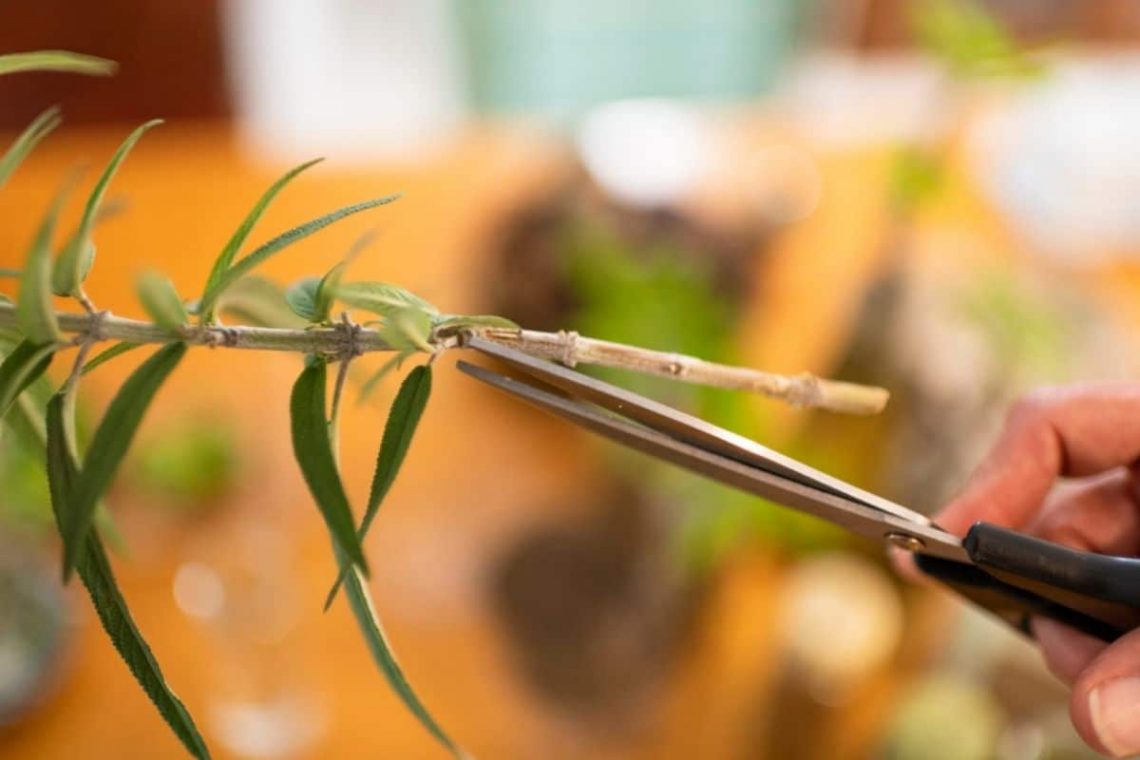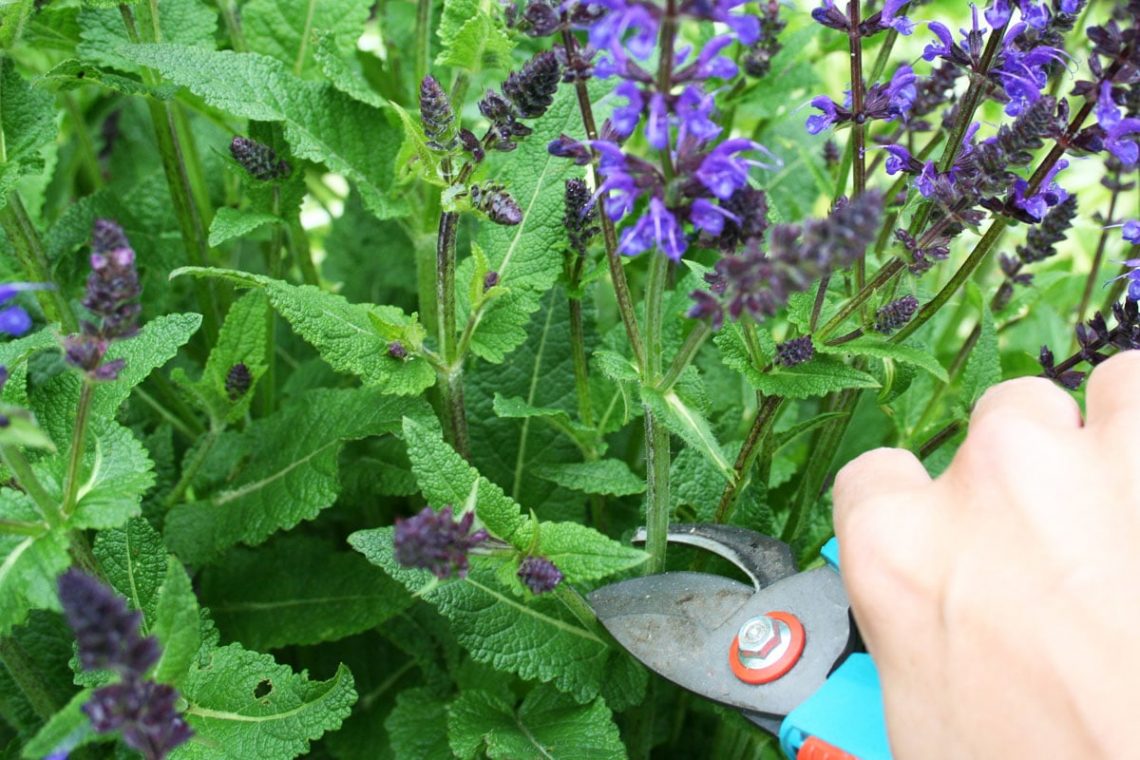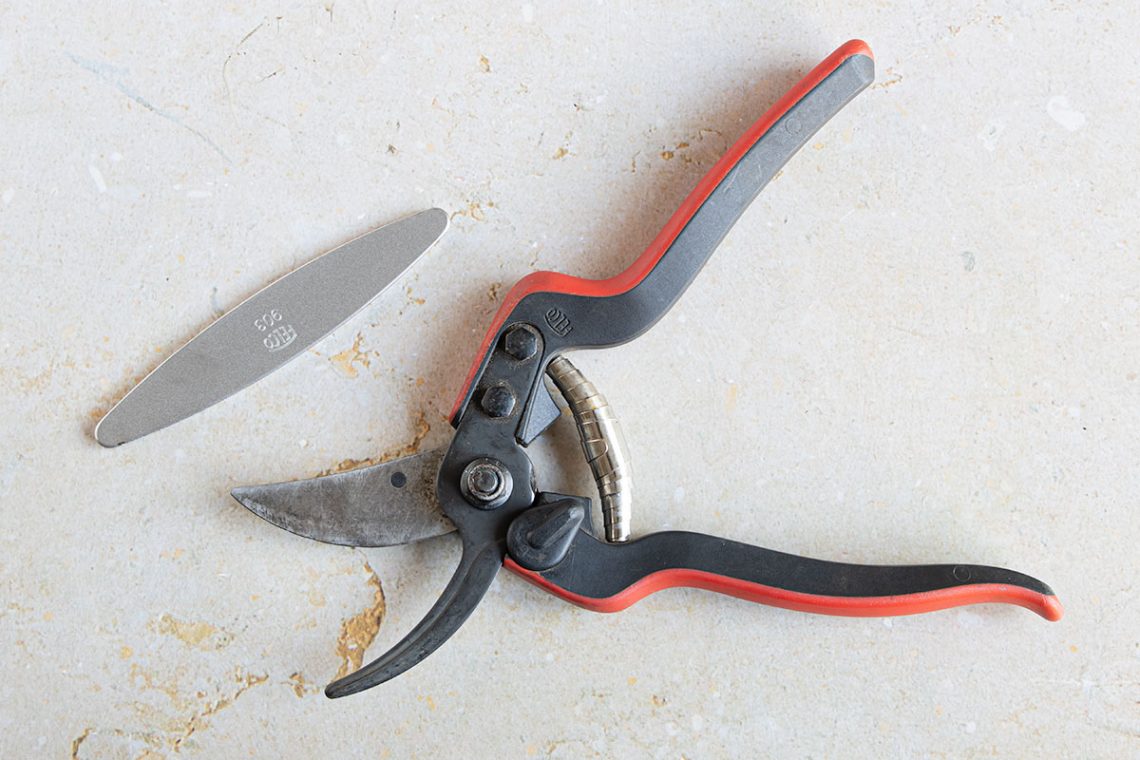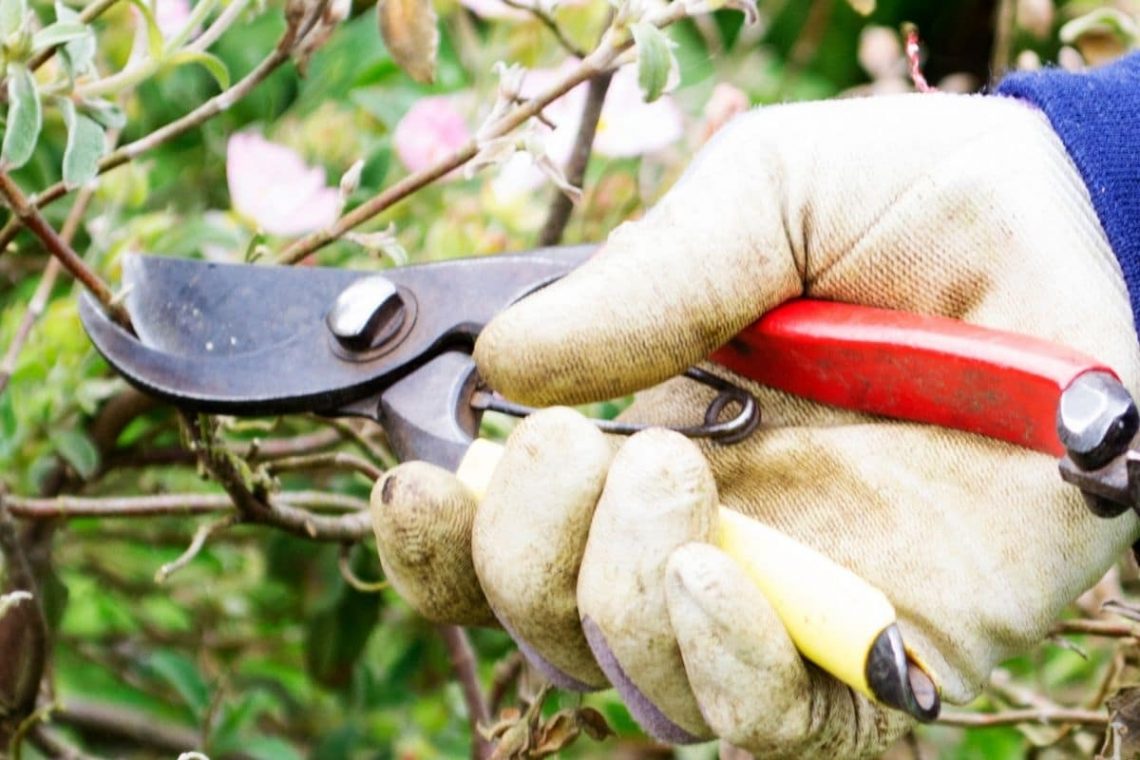Contents
Sage growth
The Mediterranean culinary herb usually grows as a perennial half-shrub, rarely as a perennial or shrub. Due to its growth characteristics, older shoots become woody over time. These usually do not form new leaves and remain bare. The larger the plant grows, the balder the older parts become. Sage also tends to break apart because of its brittle wood. This can result in the “trunk” tearing apart close to the ground, for example due to snow load in winter, and the shoots then lying on the ground. Although the plant usually sprouts again, it no longer grows so beautifully upright and forms a woody, bare center.

Note: Such a plant can still be saved by rooting the shoots lying on the ground and replanting.
Recognize old sage
The following characteristics indicate that the plant is over-aged and needs urgent action:
- old wood inside the shrub
- shoots becoming bare
- wood cracks and becomes brittle
- flowering is declining
- weak or hesitant new shoots
Rejuvenate by pruning
To avoid major interventions in the first place, the kitchen herb should be pruned regularly. This is the best way to prevent lignification. However, if you have an older specimen in the garden that has received little attention and is already woody, you can no longer avoid a more elaborate rejuvenation pruning.

Time
The right time depends on the variety of sage, but also on the type of growth. For example, perennials can be cut back after flowering so that they form flowers once again. True sage (Salvia officinalis), which is not only the most common in gardens but also the most vulnerable to over-aging, is best pruned in the spring. The heaviest frosts should already be over, so late March to mid-April is most likely.
Tool
Suitable for pruning a sagebrush are the same tools used for other pruning tasks in the garden:
- secateurs
- possibly a small saw
- gloves
- for daily harvesting are also suitable normal kitchen scissors

Note: Because of the brittle wood, the tool should be really very sharp, so that the shoots are not torn off, but cut.
Instructions
The best way to rejuvenate old woody sage is step by step. Our instructions explain how to properly perform rejuvenation pruning.
- When pruning, the non-woody shoots should always be shortened by at least one-third, better even two-thirds. If this pruning measure is implemented consistently from the beginning, the sage will not lignify so quickly in the first place and rejuvenation may not even be necessary.
- Rejuvenating an old shrub is very difficult. To do this, first remove the old, dead shoots. Proceed carefully, especially if the woodiness is very pronounced, the branches break apart easily.
- Subsequently, a vigorous thinning is carried out. In particular, cut out weakly growing, sparsely leafy areas from the shrub.
- Take a closer look at the remaining shoots. If younger, still green side shoots are present, the woody branches are diverted to them. To do this, simply cut the shoot a few millimeters above the branch.
- It is most difficult to rejuvenate branches that do not have younger shoots, as sage resprouts poorly from the old wood. If the shoot can be dispensed with, it is simply cut away at the base.
- If the branch is to remain, you can look for a dormant eye on the woody part. This is characterized by a small thickening in the bark. If such a spot is present, the shoot is cut just above it. With a little luck, the plant will sprout anew at this point.

Care after cutting
Especially when cut into the old wood, sage sprouts again very slowly. The plant needs a lot of time to recover. It is important not to become impatient and not to try to speed up the process by too much care. It is enough to water the plant thoroughly once and fertilize it with some compost. A mulch cover will keep weeds from overgrowing the cut-back plant. Harvesting should be withheld for the time being until vigorous shoots have reestablished themselves.
Frequently Asked Questions
Do these instructions apply to other older herbs?
Other herbs that grow as shrubs also tend to over-age, including lavender, for example. Regular pruning is therefore just as important for it. Rejuvenation pruning is similar to that for sage.
Are there varieties of sage that do not overage?
These include the varieties that do not become woody, such as the tumbleweed sage (Salvia nemorosa). This is a perennial perennial and not a semi-shrub.
What mistakes can be made when pruning?
If certain varieties are cut into the old wood, the sage will not sprout. Also, it is not good to cut in the winter, then frost could endanger the plant.

